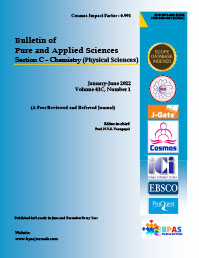Godel, Escherian Staircase and Possibility of Quantum Wormhole With Liquid Crystalline Phase of Iced-Water - Part II: Experiment Description
DOI:
https://doi.org/10.48165/bpas.2023.42C.2.5Keywords:
Cosmological Physics, Universe, Interdimensional Bridge,, Cosmological Experiments, Low Temperature Physics, Quantum Tunneling, Aspden’s Model Of Liquid Crystalline, Wormhole-At-Lab ExperimentsAbstract
The present article was partly inspired by G. Pollack’s book, and also Dadoloff, Saxena & Jensen (2010). As a senior physicist colleague and our friend, Robert N. Boyd, wrote in a journal (JCFA, Vol. 1, No. 2, 2022), for example, things and Beings can travel between Universes, intentionally or unintentionally [4]. In this short remark, we revisit and offer short remark to Neil Boyd’s ideas and trying to connect them with geometry of musical chords as presented by D. Tymoczko and others, then to Escherian staircase and then to Jacob’s ladder which seems to pointto possibility to interpret Jacob’s vision as described in the ancient book of Genesis as interdimensional staircase, e.g. an interdimensional bridge between heaven and earth (cf. classic book: Hofstadter, Godel, Escher, Bach). Jacob’s vision of angels going down to earth from that staircase has been depicted for instance in William Blake art etc. In our communication with others via physics literature and discussions etc, we came to several conclusions as follows: Firstly, possibility of wormhole effect to mirror particle universe, which sometimes it is termed non-orientable wormhole. While such mirror particles effect have been more than 50 years predicted with the so-called parity violation (cf. Lee & Yang, 1950s), and that is called symmetry breaking. Secondly, a series of extended experiments on laser irradiated cold water may suggest possible transition from a phase of water to be at least partially fourth phase of water, which may be composed of crystalline water (see e.g. Gerald Pollack, and also Harold Aspden on liquid crystalline). If we can imagine laser cooling effect can be done in protracted time, then we can achieve a physical representation of Aspden‘s liquid crystalline. Therefore, in this article we outline a series of simple experiments of laser irradiated iced-water along with beryl and selenite crystals in order to see possibility of such a quantum tunneling via quantum liquid crystalline Universe hypothesis, which may likely be modeled with iced-water. It is interesting to remark here that certain experiments by Stockholm University scientists have shown that X-ray triggered water can exhibit properties just like liquid crystal (cf. PRL, 2020). That is why we consider it possible that there can be quantum phase transition where liquid water (comprised of iced cubes and water) can exhibit effects such as tunneling in quantum liquid crystalline Universe. Last but not least, we admit that what we outlined here is just aninitial phase; and if you wish, perhaps we can call such experiments as “wormhole-at-lab” experiments (abbreviated: WHALE).
Downloads
References
Gerald H. Pollack. The Fourth Phase of Water. Seattle: Edner & Sons Publisher, ebook version. Also [1a] Subir Sachdev. Quantum phase transitions, in G. Fraser (ed). The new physics for the tewenty first century.
Cambridge: Cambridge University Press., ebook version, p. 229-254.
V. Christianto. (2023). A frugal experiment on potential cooling effect of potable water irradiated with laser pen. JCFA. 2(1).
Plato. (2018). Timaeus dan Critias. Yogyakarta: Basabasi, 2018.
V. Christianto, F. Smarandache, Y. Umniyati. (2020). Towards realism interpretation of wave mechanics based on Maxwell equations in quaternion space and some implications, including Smarandache’s hypothesis. CPTNP 2019 presentation. AIP Conference Proceedings 2234, 040008; https://doi.org/10.1063/5.0008139
V. Christianto, F. Smarandache. (2022). Remark on how to solve Maxwell-Dirac Isomorphism problem in a Realism Interpretation of Wave Mechanics based on Dirac equation. Octogon Mathematical Magazine, April issue, 2022.
V. Simulik & I. Krivsky. (2001). Lamb shift in classical electrodynamical model of atom. Third International Conference on Geometry, Integrability and Quantization, June 2001, Bulgary.
Hugh F. Wilson, Michael L. Wong, and Burkhard Militzer. (2013). Superionic to superionic phase change in water: consequences for the interiors of Uranus and Neptune. Phys. Rev. Lett. 110, 151102 —
Published 8 April 2013, DOI: 10.1103/PhysRevLett.110.151102
Ronald Redmer, Thomas R. Mattsson, Nadine Nettelmann, Martin French. (2011). The phase diagram of water and the magnetic fields of Uranus and Neptune. Icarus. 211, 798-803.
A. Yariv. (1982). An introduction to Theory and Applications of Quantum Mechanics. Canada: John Wiley & Sons, Inc., 1982.
R. Méndez-Camacho & E. CruzHernández. (2022). Tunneling between parallel One dimensional Wigner crystals. Scientifc Reports. 12, 4470, https://doi.org/10.1038/s41598-022-08367-x
Niccolo Traverso Ziani, Fabio Cavaliere, Karina Guerrero Becerra, and Maura Sassetti. (2021). A Short Review of One Dimensional Wigner Crystallization. Crystals. 11, 20. https://doi.org/10.3390/cryst11010020
Harold Aspden. (1997). Power from Ice: the thermoelectric regenerator. ENERGY SCIENCE REPORT NO. 3, 1997.
E. Del Giudice et al (2011). The interplay of biomolecules and water at the origin of the active behavior of living organisms. J. Phys.: Conf. Ser. 329, 012001. (13a) E. Del Giudice, Spinetti, Tedeschi, (2010). Water Dynamics at the Root of Metamorphosis in Living Organisms, Water. 2, 566-586; doi:10.3390/w2030566.
R. Dandoloff, A. Saxena, B. Jensen. (2010). Geometry-induced potential on a two dimensional section of a wormhole: Catenoid. Physical Review A. 81, 014102 (2010)
S. Mohanty. (2003). Liquid Crystals - The 'Fourth' Phase of Matter. Resonance, Nov. 2003.
Frankbelson d.S. Azevedo et al. (2010). An optical wormhole from hollow disclinations. Phys Rev.; also in arXiv:2010.11894v1 [physics.optics]
V. Christianto & Daniel Chandra. Godel, Escherian staircase and possibility of quantum wormhole with liquid crystalline phase of iced-water - Part I: theoretical underpinning. Submitted to EPJ (in review)
